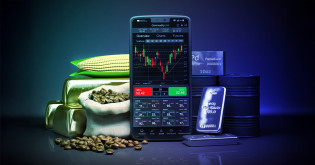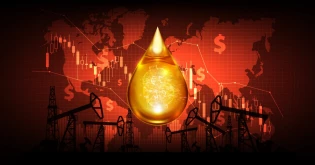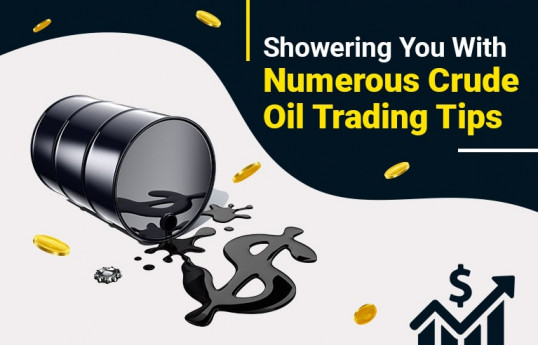-
The demand for ‘Crude oil’ is increasing every day. The Organization of the Petroleum Exporting Countries (OPEC) predicted in a monthly report that the global demand for oil in 2023 will increase by 2.22 million barrels per day (bpd), or 2.2%. When it comes to crude oil consumption, there's no question that these countries are leading the pack. The United States is the clear champion, with a yearly consumption of 934.3 gallons per capita. China is a strong contender, coming in at 138.7 gallons per capita. India and Japan are also significant players, with 51.4 and 481.5 gallons per capita, respectively.
These figures speak to the undeniable power and influence of these nations in the global oil market. It's clear that these countries are driving the demand for this vital resource and solidifying their position as major players in the global economy.
When it comes to ‘Crude oil trading’ in the spot market, The daily volume of trading in WTI futures and options is over one million contracts, and there are approximately four million contracts of open interest. Considering the vastness of this industry, we have curated a simple and easy-to-read guide that will act as a handbook for you when you start your first trade in the Spot oil market. Let’s get started with the basics:
What is Crude Oil?
The term "crude oil" refers to a naturally occurring liquid petroleum product that is composed of deposits of hydrocarbons and other organic materials formed from the skeletal remains of plants and animals that existed millions of years in the past. These organisms eventually transformed into a type of fossil fuel after being exposed to heat and pressure, which can then be refined into useful goods like gasoline, diesel, liquefied petroleum gases, and feedstock for the petrochemical industry. These organisms were buried under layers of sand, silt, and rock. Eventually, they were transformed into fossil fuels.
It is a non-renewable resource, which means that it cannot be naturally replaced at the rate that it is consumed. As a result, investing in crude oil is considered to be profitable resource.
Source of Crude Oil
Crude oil is usually found near other resources, like natural gas (which is lighter and sits on top of the crude oil) and salt water, and is usually gotten by drilling (which is denser and sinks below). After crude oil is taken out of the ground, it is refined and turned into things like gasoline, kerosene, and asphalt so that it can be sold to consumers.
One of the most valuable commodities in the world is crude oil, and how much it costs can have an impact on the entire economy. Gas prices at the pump, shipping costs, and the cost of raw materials for producers all increase when the price of oil does. The laws of supply and demand are largely what determine how much crude oil costs. Prices drop when there is a surplus of supply and little demand. Prices rise when supply shrinks, and demand rises. Geopolitical developments or severe weather that affects oil-producing nations can alter public perceptions of supply and demand.
Oil can be traded on futures markets, spot markets, or through exchange-traded funds (ETFs).
Historical points
- The Industrial Revolution discovered and developed crude oil.
- The U.S. was a major oil producer in the late 19th and early 20th centuries and developed technology to turn oil into gasoline.
- The Organization of the Petroleum Exporting Countries (OPEC) was founded in 1960 by the world's largest crude oil and natural gas reserves.
- OPEC nations-controlled oil prices and supply in the late 20th century.
- Fracking led to a second U.S. energy boom in the early 21st century, reducing OPEC's influence.
- Many 21st-century manufacturers make products that use alternative energy.
How to Trade Crude Oil?
The goal of oil trading is to make money by buying and selling different kinds of oil and assets related to oil. Since there is only so much oil in the world, its price can change a lot when supply and demand change. Because of how volatile it is, it is very popular among traders.
You can trade on the spot price of oil or the prices of oil futures or options contracts with CFDs, even if you don't own any oil.
You can trade oil in three ways:
Spot Price of Oil
Oil spot prices show how much it costs to buy or sell oil right now, instead of at a certain time in the future. Spot prices show how much oil is worth right now, while futures prices show how much the market thinks it will be worth when the future ends.
Futures on Oil
Oil futures are agreements to trade a certain amount of oil at a certain price on a certain date. They are traded on markets and show how much people want different kinds of oil. Oil futures are a common way to buy and sell oil, and they give you a chance to trade prices that are going up or down.
Oil Options
An oil option is like a futures contract, except you don't have to trade if you don't want to. They give you the right to buy or sell a certain amount of oil at a certain price before a certain date, but you don't have to.
Suggested Reading: Things you must know before investing in commodities futures
Crude Oil Trading Strategy
There are many different strategies that traders can use when trading crude oil; here are a few examples:
- Trend-Following Strategy: This strategy is based on figuring out whether the market is going up or down and then making trades in the same direction. Traders can find the trend with the help of technical indicators like moving averages, trend lines, and momentum indicators.
- Breakout Strategy: This strategy involves finding key levels of support and resistance and then making trades when the price breaks through these levels. Traders can use chart patterns, such as triangles and wedges, to identify key levels.
- Contrarian Strategy: This strategy involves taking a position that is opposite to the current market trend. Traders can use fundamental analysis, such as supply and demand data, to identify overbought or oversold conditions in the market.
- Spread Trading strategy: This strategy involves buying and selling contracts of crude oil simultaneously. Traders can use this strategy to take advantage of the difference in price between two contracts, usually the nearby contract and the next month's contract.
- News-based trading strategy: This strategy involves keeping track of the news related to crude oil and making trades based on the information you gain. For example, if there is a report of a natural disaster that could disrupt oil production, it may be a good time to buy or sell crude oil.
Suggested Reading: 4 steps to really improve crude oil trading
Important Features of the Crude Oil Market
- Volatility: Crude oil prices are known for their volatility, which can fluctuate rapidly due to a variety of factors.
- Global demand: Crude oil is a widely used resource, and the market is heavily influenced by global demand.
- Political instability: Unrest in major oil-producing countries can disrupt production and lead to price fluctuations.
- Natural disasters: Events such as hurricanes can disrupt production and transportation, affecting prices.
- Government policies: Government policies and regulations can also affect crude oil prices.
Conclusion
Now that you have gone through the basics, it's time to move forward. Start practicing on a demo account. Make strategies and test them before you actually enter the market. Your mindset is the key to opening a winning position. Learn more about technical and fundamental analysis to strengthen your decision-making process.






